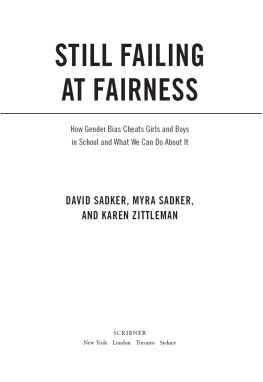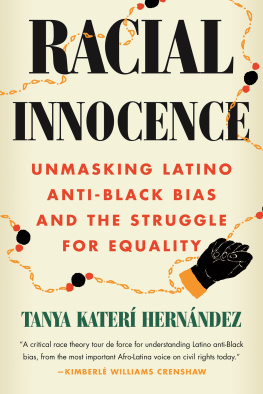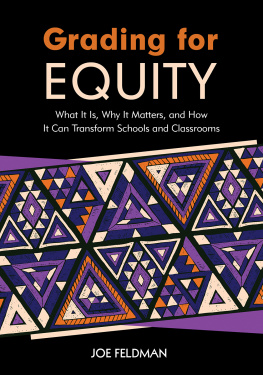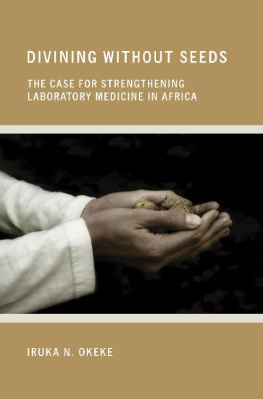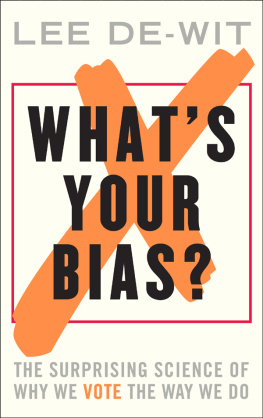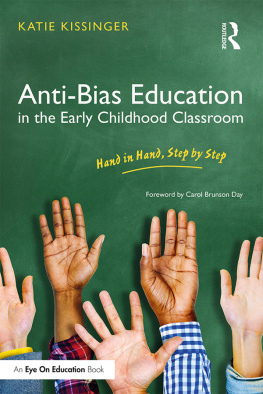Iheoma Iruka - Dont Look Away: Embracing Anti-Bias Classrooms
Here you can read online Iheoma Iruka - Dont Look Away: Embracing Anti-Bias Classrooms full text of the book (entire story) in english for free. Download pdf and epub, get meaning, cover and reviews about this ebook. year: 2019, publisher: Gryphon House Inc., genre: Children. Description of the work, (preface) as well as reviews are available. Best literature library LitArk.com created for fans of good reading and offers a wide selection of genres:
Romance novel
Science fiction
Adventure
Detective
Science
History
Home and family
Prose
Art
Politics
Computer
Non-fiction
Religion
Business
Children
Humor
Choose a favorite category and find really read worthwhile books. Enjoy immersion in the world of imagination, feel the emotions of the characters or learn something new for yourself, make an fascinating discovery.

- Book:Dont Look Away: Embracing Anti-Bias Classrooms
- Author:
- Publisher:Gryphon House Inc.
- Genre:
- Year:2019
- Rating:5 / 5
- Favourites:Add to favourites
- Your mark:
- 100
- 1
- 2
- 3
- 4
- 5
Dont Look Away: Embracing Anti-Bias Classrooms: summary, description and annotation
We offer to read an annotation, description, summary or preface (depends on what the author of the book "Dont Look Away: Embracing Anti-Bias Classrooms" wrote himself). If you haven't found the necessary information about the book — write in the comments, we will try to find it.
Dont Look Away: Embracing Anti-Bias Classrooms — read online for free the complete book (whole text) full work
Below is the text of the book, divided by pages. System saving the place of the last page read, allows you to conveniently read the book "Dont Look Away: Embracing Anti-Bias Classrooms" online for free, without having to search again every time where you left off. Put a bookmark, and you can go to the page where you finished reading at any time.
Font size:
Interval:
Bookmark:

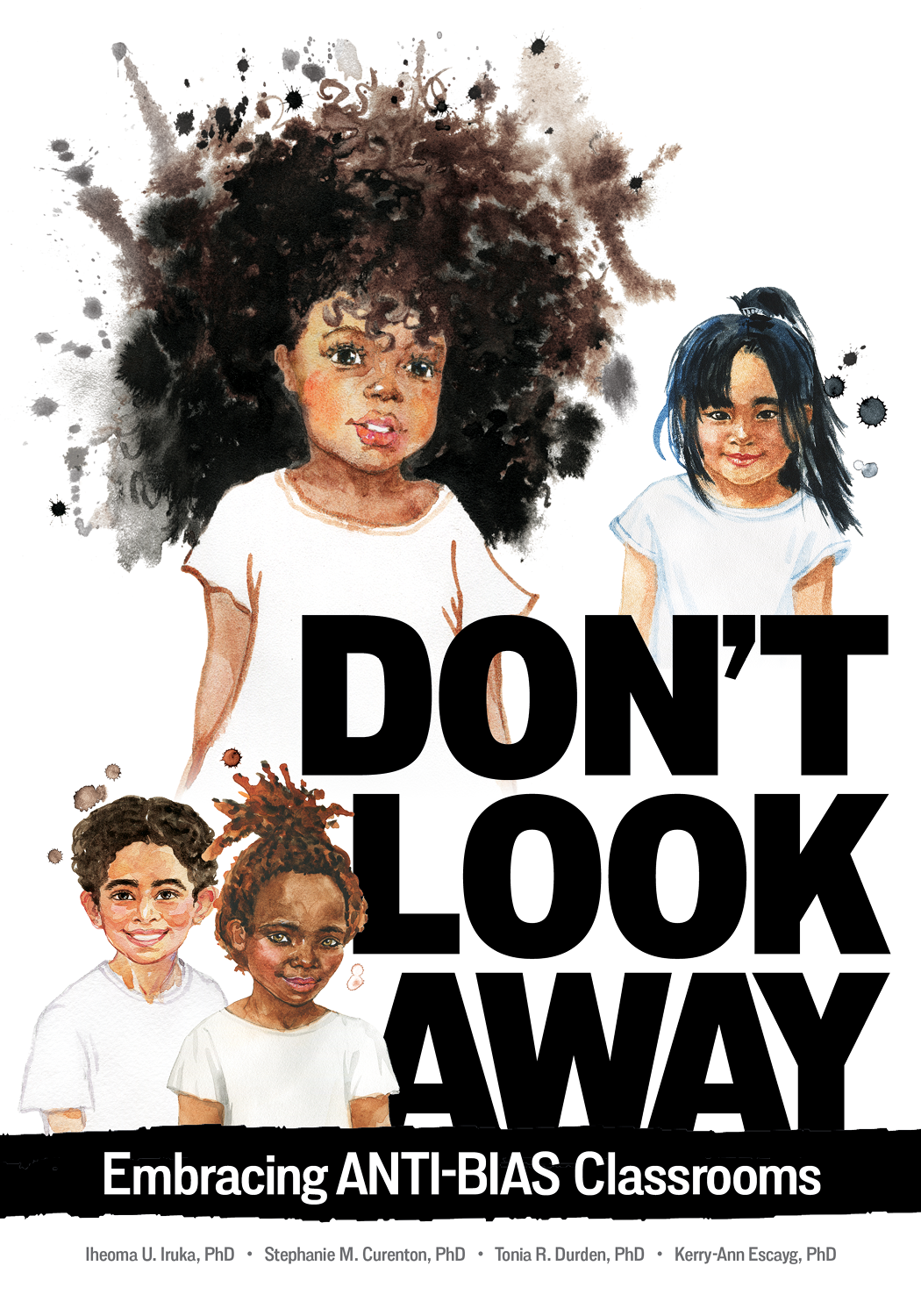
Contents

Copyright
2020 Iheoma U. Iruka, Stephanie M. Curenton, Tonia R. Durden, Kerry-Ann Escayg
Published by Gryphon House, Inc.
P. O. Box 10, Lewisville, NC 27023
800.638.0928; 877.638.7576 [fax]
Visit us on the web at www.gryphonhouse.com.
All rights reserved. No part of this publication may be reproduced or transmitted in any form or by any means, electronic or technical, including photocopy, recording, or any information storage or retrieval system, without prior written permission of the publisher. Printed in the United States. Every effort has been made to locate copyright and permission information.
Cover images used under license from Shutterstock.com.
Library of Congress
Cataloging-in-Publication Data
Library of Congress Control Number:2019953929
Bulk Purchase
Gryphon House books are available for special premiums and sales promotions as well as for fund-raising use. Special editions or book excerpts also can be created to specifications. For details, call 800.638.0928.
Disclaimer
Gryphon House, Inc., cannot be held responsible for damage, mishap, or injury incurred during the use of or because of activities in this book. Appropriate and reasonable caution and adult supervision of children involved in activities and corresponding to the age and capability of each child involved are recommended at all times. Do not leave children unattended at any time. Observe safety and caution at all times.
Acknowledgments
We stand on the shoulders of others who paved the way for us to be early childhood scholars, researchers, educators, and advocates for social justice. We thank our parents, spouses, and children, who continue to support our work, mission, and goal to ensure that our communities prosper and thrive while also dismantling racism, discrimination, and inequities. We thank all of the parents, families, children, communities and community leaders, colleagues, and organizations that have supported our research on supporting the well-being and achievement of Black children and other children of color.
Introduction
In this book, we seek to support program leaders, providers, teachers, and others who are interested in strengthening the early care and education sector to provide the best care and learning environment for all children. Most importantly, we seek to honor the history of early care and education, which started with President Lyndon Johnsons 1965 War on Poverty. That effort strived to ensure that poor children, the majority of whom were Black, were able to start school at the same level as their White peers. While early care and education has made great strides in creating supports for childrens school and life success, there is still a long way to go when many childrenespecially Black children and other children of colordo not have the same access to high-quality early care and education programs as their White peers.
As you read, we will encourage you to think about your unconscious biases (those negative thoughts, feelings, and stereotypes we have that are outside our awareness) toward race, class, and gender identities. We all have them! In fact, left to their own devices, our brains will automatically create such biases, but it is our job to actively control our thinking by catching ourselves when our minds wander toward negative stereotypes. We must purposefully reteach our brains that those biases are not true. We will also encourage you to reflect on your past and present experiences, both inside and outside the classroom. We will encourage you to imagine what it would take to be an early childhood educator who strives to change the world by intentionally seeking to make the upcoming generations less biased and more inclusive toward marginalized and underrepresented populations due to race, ethnicity, language, sexual orientation, or gender identity. We challenge you to take action by speaking up and advocating for the rights of children and aiming to influence those policies and practices that have childrens well-being in mind.
Early childhood educators have a pivotal role in changing the future, because the early years of life, birth to age eight, are the most critical time period in our human development. These early years are a sensitive period for the growth of childrens language, self-regulation, cognition, physical development, moral development, and self-identity. When children experience trauma caused by toxic stress and negative life events, including stress caused by bias and racism, the consequences can continue into later life. Even though children are resilient in the face of many adversities, early childhood professionals can make the road a little smoother, especially for those children who face a lot of bumps, bruises, and hardships due to their race, ethnicity, culture, language, or religion. Research has taught us about the lifelong benefit of early childhood education, but we are also learning about the lifelong impact of trauma, especially when it is experienced during this sensitive period of development.
One such trauma experienced by young children, especially children of color, is exclusion. Often, this takes the form of suspension and expulsion. Two hundred and fifty children are suspended from school every day, and many of them are children of color. When we consider the achievement gap and third-grade reading scores, we realize that these are the children who need education and support the most. Children of color are not experiencing high-quality early learning the same way or at the same rate as White children. (We will discuss this further in chapter 2.)
It is urgent that we deliver on the promise of equal education by providing equitable early care and education. To do this, we must address bias, racism, segregation, low expectations, and trauma, and ensure that early care and education programs and educators are engaging in culturally responsive anti-bias education with children, especially Black children and other children of color.
How to Use This Book
The authors aim to provide a resource to help those working with or on behalf of children. We seek to unpack and address the implicit biases (also known as unconscious biases) that paint how we treat and see each other and the biases that harm children, whether intentionally or unintentionally. For example, how do you perceive a mother who is always ten minutes late in dropping off or picking up her child? How does this behavior influence how you see this child? Does your perception change if this mother has similar attributes to you or your mother? What if you know the lateness in the morning is due to the father who wants to spend a few minutes with his son because he works the graveyard shift (10 p.m.8 a.m.) every day? What is the emotional harm done to a Black child when he is often getting the message that he is scary and no one wants him around? What is the emotional harm done to young girls who are told they are too loud and have too much attitude? Are we laying a foundation that ensures they will be successful or one that says there is something wrong with them?
This book seeks to support early educators in recognizing, addressing, and eliminating bias and in practicing culturally responsive, anti-bias pedagogies to ensure that trauma is not being revisited upon the children we are expected to protect, nurture, and educate. In each chapter, the author of that chapter offers information and research to help you understand and recognize bias. We discuss anti-bias education and culturally responsive pedagogy to give you the tools to teach children equitably. And, we offer questions for reflection, to help you think critically about bias and ways to implement culturally responsive practices and anti-bias pedagogy.
Font size:
Interval:
Bookmark:
Similar books «Dont Look Away: Embracing Anti-Bias Classrooms»
Look at similar books to Dont Look Away: Embracing Anti-Bias Classrooms. We have selected literature similar in name and meaning in the hope of providing readers with more options to find new, interesting, not yet read works.
Discussion, reviews of the book Dont Look Away: Embracing Anti-Bias Classrooms and just readers' own opinions. Leave your comments, write what you think about the work, its meaning or the main characters. Specify what exactly you liked and what you didn't like, and why you think so.

